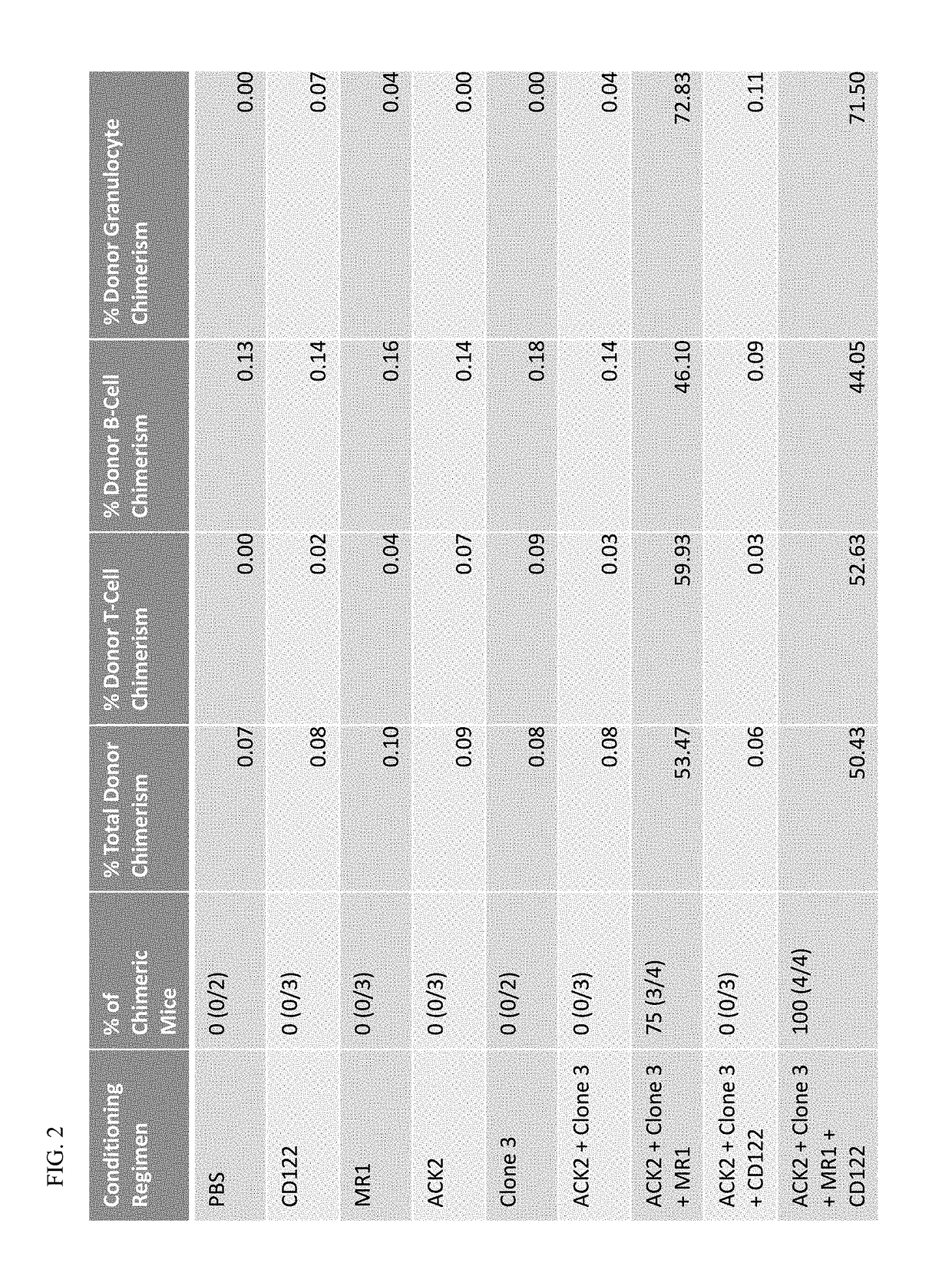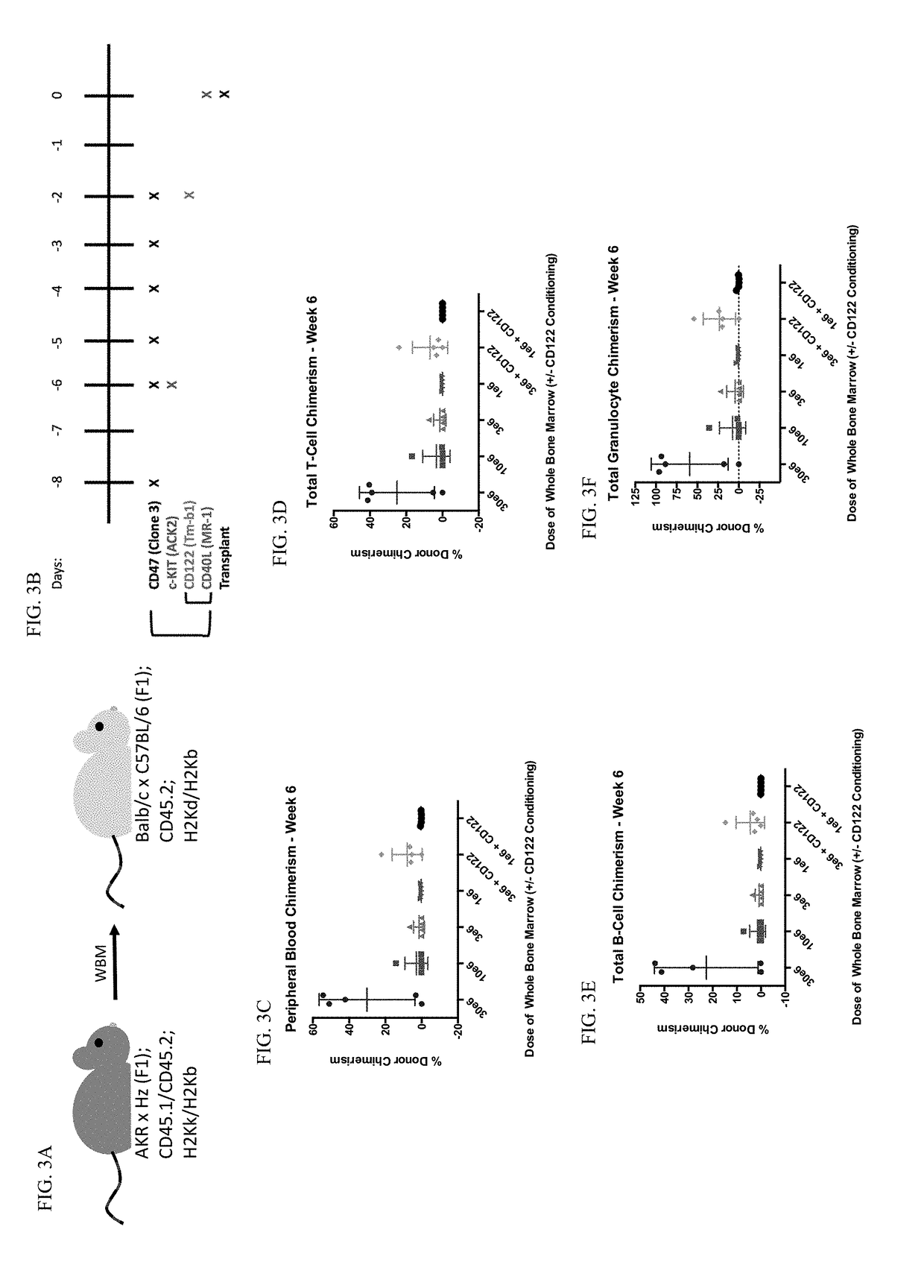Non-genotoxic conditioning regimen for stem cell transplantation
- Summary
- Abstract
- Description
- Claims
- Application Information
AI Technical Summary
Benefits of technology
Problems solved by technology
Method used
Image
Examples
example 1
A Non-Genotoxic Conditioning Regimen for Haploidentical Hematopoietic Stem Cell Transplantation Materials and Methods
[0138]Mice. All donor and recipient mice were between 8 and 12 weeks of age. Donor mice were AKR×Hz F1 mice bred by the Shizuru lab. AKR×Hz F1 mice are double positive for 45.1 and 45.2, and H2Kb and H2Kk. Recipient mice were CB6F1 from JAX. CB6F1 mice are single positive for 45.2 and double positive for H2Kb and H2Kd. All procedures were approved by the International Animal Care and Use Committee. Mouse strains were maintained at Stanford University's Research Animal Facility.
[0139]Antibodies. All antibodies for in vivo conditioning were purchased from Bio X Cell, including anti-CD47 (clone 3 / clone mIAP410), anti-CD117 (clone ACK2), anti-CD40L (clone MR-1), and anti-CD122 (clone TM-b1).
[0140]BM Transplant. Recipient CB6F1 mice were given a priming dose of 100 ug of anti-CD47 intraperitoneally on Day −8. On Day −6, mice were given a 500 μg retro-orbital injection of a...
example 2
Antibody Conditioning Enables MHC-Mismatched Hematopoietic Stem Cell Transplants and Organ Graft Tolerance
[0144]Replacing a patient's diseased blood system by hematopoietic cell transplantation (HCT) can treat or cure genetic disorders of the blood and immune system, including leukemia, autoimmune diseases and immunodeficiencies. In HCT, a patient's blood and immune systems are typically ablated using toxic “conditioning regimens” (chemotherapy and / or radiation) and then replaced with donor cells containing hematopoietic stem cells (HSCs) to regenerate a healthy blood system. While HCT is a foundational treatment, its use and safety are hindered by graft vs. host disease (which can be overcome by transplanting purified HSCs devoid of contaminating donor T cells) and lethal toxicities caused by the conditioning regimens. Therefore, a decisive goal is to achieve HCT conditioning with more specific, safer agents (e.g., monoclonal antibodies), obviating the need for toxic chemotherapy o...
PUM
| Property | Measurement | Unit |
|---|---|---|
| Fraction | aaaaa | aaaaa |
| Body weight | aaaaa | aaaaa |
Abstract
Description
Claims
Application Information
 Login to View More
Login to View More - R&D
- Intellectual Property
- Life Sciences
- Materials
- Tech Scout
- Unparalleled Data Quality
- Higher Quality Content
- 60% Fewer Hallucinations
Browse by: Latest US Patents, China's latest patents, Technical Efficacy Thesaurus, Application Domain, Technology Topic, Popular Technical Reports.
© 2025 PatSnap. All rights reserved.Legal|Privacy policy|Modern Slavery Act Transparency Statement|Sitemap|About US| Contact US: help@patsnap.com



